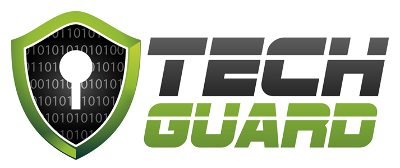New research from DataSolutions, an Irish IT solutions provider, has revealed that a majority (60%) of senior IT decision makers consider human error to be the greatest threat facing Irish businesses and organisations at the moment. This is consistent with results of similar surveys in other countries such as the US or UK, as cyber criminals evolve to target end-users and take advantage of improperly-trained staff instead of trying to bypass or hack complex technical security measures. The survey also revealed that 93% of respondents claim that they have a formal cyber security and defense strategy in place to help navigate today’s online threat environment, particularly in a post-GDPR world.
Less Businesses Reporting Ransomware Despite Increase In Attacks
It seems that everyone in the cyber security sphere is talking about ransomware these days. Last year, attacks such as WannaCry, NotPetya and BadRabbit took the business world by storm, costing billions in damages. Ransomware is by no means a new threat (it has been around since at least 2005), but it is one of the fastest growing and most costly. Cyber crime is constantly changing, and criminals keep creating news ways to steal money. Ransomware has gotten increasingly sophisticated since 2005, but the people using and deploying it haven’t necessarily – now some cyber criminals are making more money selling high-tech ransomware strains to non-technical criminals than if they were to conduct the attacks themselves. The result is that more and more ‘hackers’ have access to ransomware and need very little technical know-how to operate it, leading to more and more ransomware attacks each year. It may come as a surprise, then, to hear that the FBI received less reports of ransomware attacks in 2017 than in 2016 and 2015, despite the increase in attacks.

The FBI reported just 1,783 reports of ransomware attacks in 2017, compared to 2,673 in 2016 and 2,453 in 2015.
Meltdown and Spectre Attacks Expected to Surge in 2018
The world has not seen the last of Meltdown and Spectre, according to a recent report by cyber security and firewall specialists SonicWall. By January 2018, the company had already come across 500 ‘zero day’ malware programs designed to take advantage of various processor vulnerabilities. On Meltdown and Spectre, SonicWall has said, “It’s likely these are just two of many processor vulnerabilities already in play. We predict the emergence of password stealers and infostealers to take advantage of Meltdown and Spectre vulnerabilities”.

Meltdown and Spectre are just two CPU vulnerabilities among many that criminals are expected to continue exploiting throughout 2018 and beyond.
World’s Largest DDoS Attack Record Broken Twice in a Week
In a worrying new cyber threat trend, the record for largest DDoS (Distributed Denial of Services) attack has been broken, not once, but twice, over the past week. A DDoS attack, in essence, is an attempt to make an online service (such as your business’s website) unavailable by overwhelming it with traffic from various sources. Last week, the coding repository GitHub was briefly taken offline in a 1.3 Terrabits-per-second DDoS attack. This wasn’t entirely unsurprising, as DDoS attacks have been steadily building throughout 2018, but March has definitely been the worst month so far. Now, an unnamed US service provider has reported experiencing an even larger DDoS attack, which hit 1.7 Terrabits-per-second, only a few days after the previous record had been broken. This could pose a significant threat for many businesses that operate memcached database servers, which typically have high-bandwidth access and can be badly impacted by DDoS attacks.

At 1.7 Terrabits-per-second, the unnamed US service provider experienced the largest DDoS attack to date. These attacks are expected to increase in size and frequency going forward.
Reports Show Cyber Crime Cost Consumers €150bn in 2017
Norton has just released their annual Cyber Security Insights Report, which analyses the effects of cyber crime around the world. One of the key findings of this report is that when it comes to cyber security, “consumers are overconfident in their security prowess, leaving them vulnerable and enabling cyber criminals to up the ante this year, which has resulted in record attacks”. Over the course of 2017, the report estimates that over 978 million adults in 20 countries around the world experienced cyber crime. These attacks cost consumers an estimated €150 billion.
While most people stated that cyber security was important to them, one third of people stored their passwords insecurely and one fifth admitted to using the same password across all sites they use. Over half of the respondents reported either they or someone they knew had been a victim of cyber crime, with the average cyber crime victim spending almost three full working days recovering from the attack.


